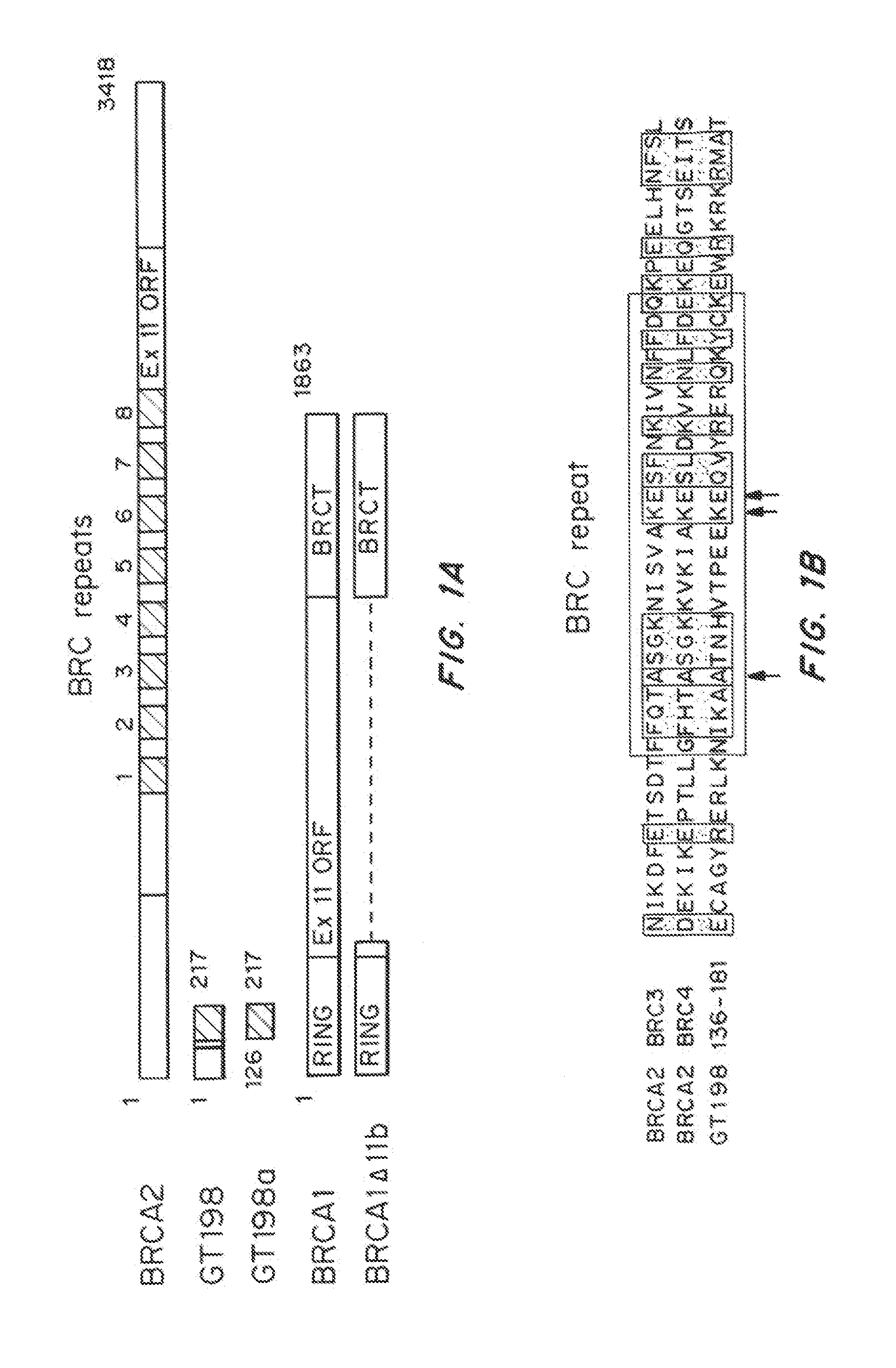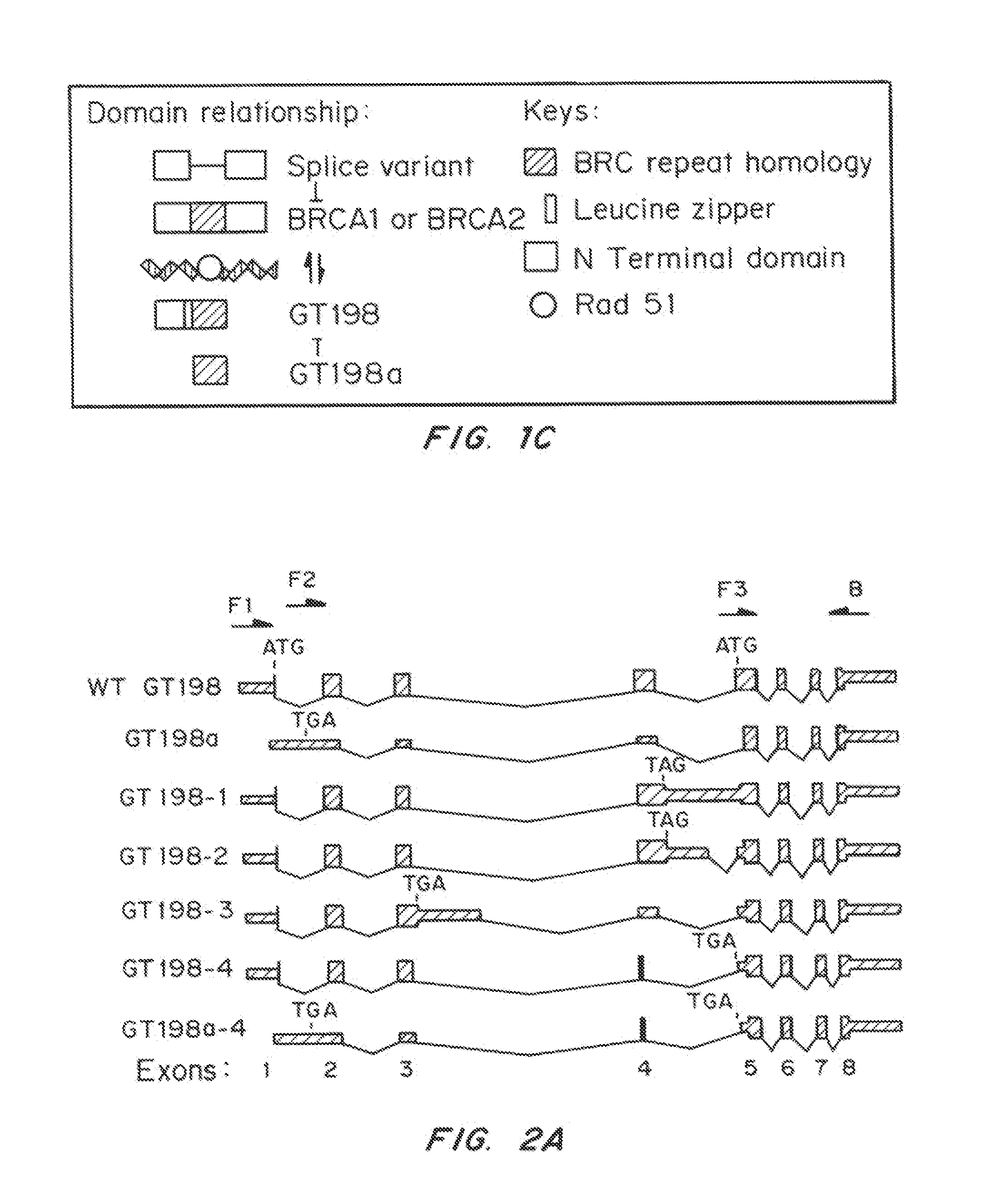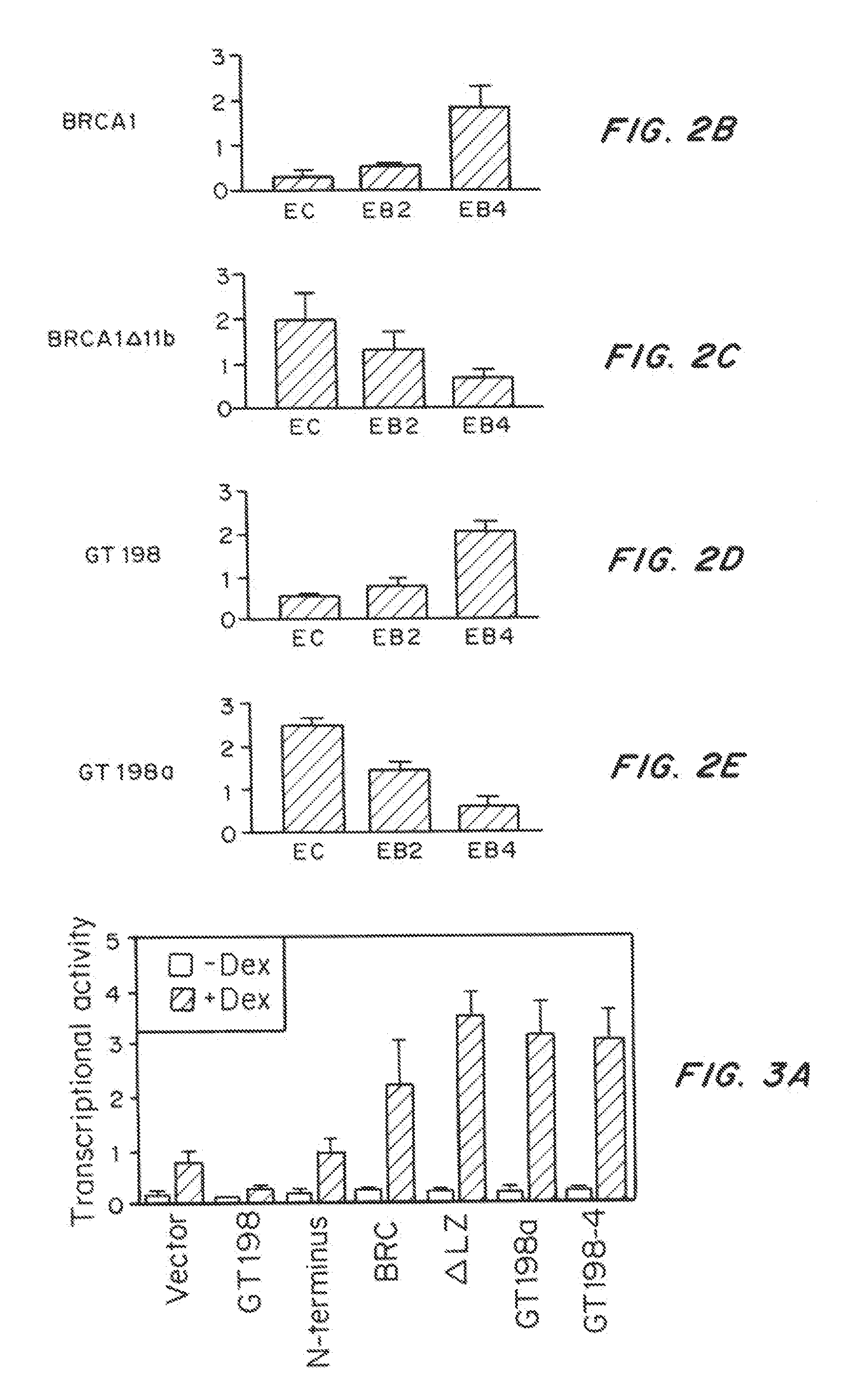Breast Cancer Susceptibility Gene GT198 and Uses Thereof
a susceptibility gene and breast cancer technology, applied in the field of breast cancer susceptibility gene gt198, can solve the problems of insufficient explanation of the specific risk of breast and ovarian cancer evidently linked to hormone regulation, insufficient use of existing brca1 and brca2 genes for detecting breast and ovarian cancer and treating cancer,
- Summary
- Abstract
- Description
- Claims
- Application Information
AI Technical Summary
Benefits of technology
Problems solved by technology
Method used
Image
Examples
example 1
Protein Sequence Homology Among GT198 and the BRC Repeats in BRCA2
[0114]GT198 has an N-terminal domain and a C-terminal DNA-binding domain (DBD) linked by a leucine zipper dimerization domain. Due to the functional similarities among GT198, BRCA1, and BRCA2 described below, we performed the multiple sequence alignment of BRCA1, BRCA2, and GT198 using ClustalW, and identified that the C-terminal DBD of GT198 is homologous to the BRC repeats in BRCA2 (FIG. 1). In particular, the C-terminal region of GT198 is aligned with the third and the fourth BRC repeats of BRCA2. The demonstrated Rad51-binding activity among these three sequences provides functional support for the presence of a potential BRC repeat in GT198. The N-terminus of GT198 showed limited homology to the BRC repeats. The functional implication of their sequence homology is that GT198 could compete with BRCA2 in binding to Rad51 through the BRC repeat region as illustrated in FIG. 1c.
example 2
GT198 is Co-Expressed with BRCA1 and BRCA2
[0115]The endogenous nuclear expression pattern of GT198 is remarkably similar to or almost indistinguishable from both BRCA1 and BRCA2 expression in mice (Chodosh, L. A., J Mammary Gland Biol Neoplasia, 3:389-402 (1998)). GT198 protein expression increases in primitive ectoderm at four days of embryoid bodies derived from embryonic stem cells. Consistent with the previous Northern blot analysis (Ko, L., et al., Mol Cell Biol, 22:357-69 (2002)), in situ hybridization revealed a marked increase in GT198 mRNA expression in neural tubes from E8.5 to E10.5 (data not shown). The expression peaks at E12.5 in all three germ layers and is downregulated at E18.5. In adult rodents, GT 198 protein was predominantly found in testis with restricted expression in thymus, spleen and ovary by Western blot analysis (Ko, L., et al., Mol Cell Biol, 22:357-69 (2002)). Similar to BRCA1, GT198 mRNA expression can also be detected in different tissues. At the cell...
example 3
Alternatively Spliced GT198 Variants Inhibit Wild Type GT198
[0116]During RT-PCR analysis of human GT198 mRNA expression, a number of GT198 alternative splice variants were identified. Alternative splicing of GT198 is tissue-specific with more variety of splicing variants were found in embryonic tissues or in cancer cells than in normal adult tissues. Sequencing results showed that all alternative splicing events occur strictly at the GT-AG consensus sites, some of which are supported by NCBI EST evidence. Interestingly, variations of alternative splicing always occurred at the 5′ half of the gene, and all generate premature stop codons with early termination of translation (FIG. 2a). All variant transcripts contain an open reading frame encoding the DBD (aa 126-217) with BRC repeat homology. A few variants also encode the N terminus. These truncated forms of potential proteins are devoid of the leucine zipper at amino acids 89-117 (Ko, L., et al., Mol Cell Biol, 22:357-69 (2002)), a...
PUM
| Property | Measurement | Unit |
|---|---|---|
| temperature | aaaaa | aaaaa |
| temperature | aaaaa | aaaaa |
| pH | aaaaa | aaaaa |
Abstract
Description
Claims
Application Information
 Login to View More
Login to View More - R&D
- Intellectual Property
- Life Sciences
- Materials
- Tech Scout
- Unparalleled Data Quality
- Higher Quality Content
- 60% Fewer Hallucinations
Browse by: Latest US Patents, China's latest patents, Technical Efficacy Thesaurus, Application Domain, Technology Topic, Popular Technical Reports.
© 2025 PatSnap. All rights reserved.Legal|Privacy policy|Modern Slavery Act Transparency Statement|Sitemap|About US| Contact US: help@patsnap.com



